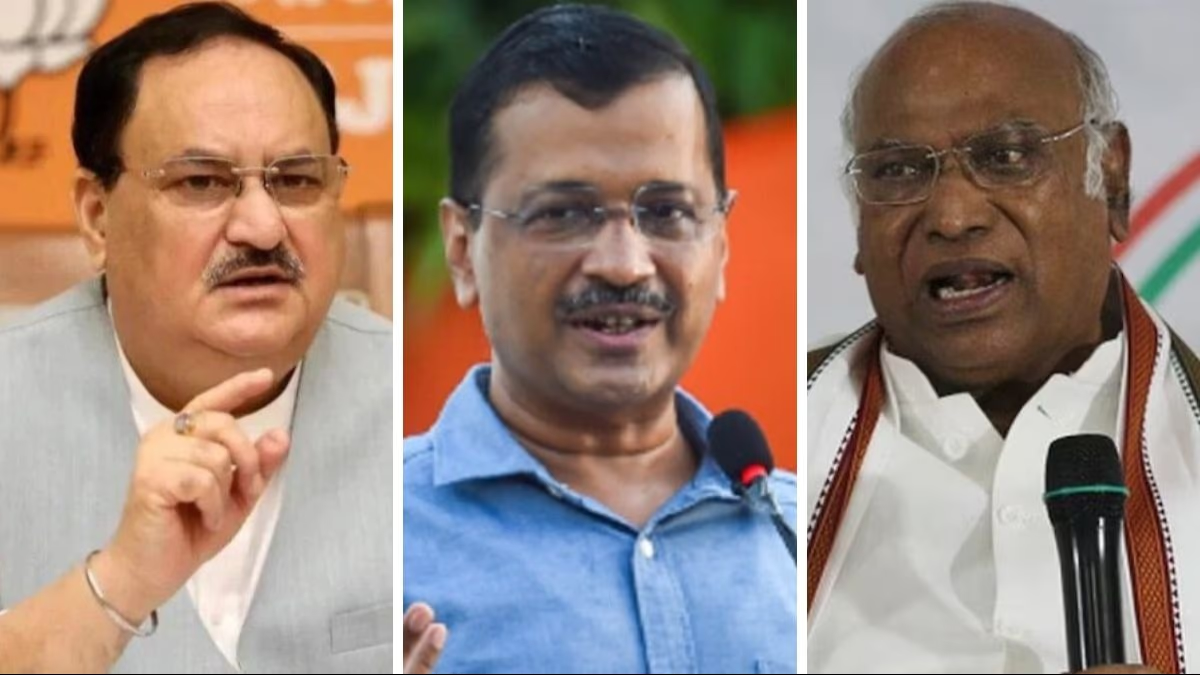The outcomes of the by-elections for five assembly seats across four states, including Punjab's Ludhiana West, have been declared. Punjab's ruling party, Aam Aadmi Party, retained its hold on Ludhiana West. Meanwhile, the Gujarat's Visavadar seat also went to AAP, while the Kadi seat in Mehsana district landed with the ruling Bharatiya Janata Party (BJP). West Bengal's Kaliyaganj was won by the Trinamool Congress (TMC), and Kerala's Nilambur saw a win for the Congress-led coalition.
What messages do the by-election results convey?
Elections were held on June 19 for five assembly seats across four states. The vote counting for four assembly seats in three states, excluding Ludhiana West, began at 7 AM. Counting for Ludhiana West commenced at 8 AM. When we look at the results, Ludhiana, Kaliyaganj, and Kadi assembly seats swung towards the ruling parties, while the Visavadar and Nilambur seats favored opposition candidates.
1-
The trust placed by the public in their chosen party remains intact even in by-elections
A notable aspect of the by-elections in four states involving five seats is that the public's trust in their original choice during the general elections persisted in the by-elections. Apart from the Nilambur seat, which slipped from the Left's grip, the results in Punjab, Gujarat, and West Bengal illustrate this continued confidence. The parties that initially won the elections also secured victories in the by-election.
In Punjab, while holding power, AAP maintained control over Ludhiana West, while opposing BJP’s reign they marked a victory on Gujarat's Visavadar. The Kadi seat stayed under BJP’s fold, retaining its emblem. In West Bengal, TMC emerged triumphant from Kaliyaganj.
2-
The anti-incumbency trend continues on the Visavadar seat
The voting results in Gujarat's Visavadar run contrary to the state’s governing endorsement. The BJP hasn't claimed this seat since 2007, and the trend persisted even in the by-elections. Although granted the governing mandate in the 2017 Gujarat elections, Visavadar's electorate favored Congress.
Reflecting its distinct sway, Visavadar maintained its stance against the ruling party in the 2022 elections as well, awarding AAP’s candidate with victory. Following by-elections prompted by a switch of allegiance and resignation by its legislator, the local anti-incumbency sentiment held strong.
3-
AAP widens its victory margin in Punjab
During the by-election, the AAP candidate not only won the Ludhiana West assembly seat but increased their victory margin compared to the 2022 assembly elections. In those elections, AAP’s candidate Gurpreet Bassi Gogi secured 40,443 votes, defeating his closest contender Congress's Bharat Bhushan Ashu by 7,512 votes. In the by-election, AAP's Sanjeev Arora received 35,144 votes, yet expanded his winning margin to 10,634 votes.
4-
Four seats go to India Bloc; NDA claims one seat
Through this by-election across five seats, the India Bloc parties—AAP, Congress, and TMC—secured four wins, while the BJP-led NDA managed to retain one, notably when Gujarat itself entertained two by-elections.
Read more here




